MOST POPULAR BOOKS READ IN WWII
A significant event occurred during WWII – America became a nation of readers.
From 1943 to 1947, the Army and Navy Library Services distributed an astonishing 123 million portable paperbacks to U.S. service members worldwide. They were free. Two men were primarily responsible for the project: U.S. Army librarian Ray Trautman and graphic arts specialist H. Stahley Thompson, who came up with the idea of affordable, light-weight editions that could fit easily into a combat jacket pocket.
The idea received the support of the Council on Books in Wartime—a nonprofit organization of publishers and librarians who regarded books as “weapons in the war of ideas.” Thus, a miraculous collaboration emerged with the Army, Navy, War Production Board, and over 70 publishers—the most transformative chapter in literary history.
Here are ten of the most popular books read by men and women of the Greatest Generation during WWII.
1] A Tree Grows in Brooklyn by Betty Smith.
The Armed Services Editions ultimately comprised 1,324 lightweight paperback titles across various genres, including bestsellers, classics, mysteries, and poetry, for use by the United States armed forces. The most popular of the ASE titles was Smith’s coming-of-age story, published in 1943, which combined biting humor and heartache, and quickly went into a second printing before its official release. The Armed Services Editions were designed to fit into uniform pockets, and copies of Smith’s book became highly prized. One Marine wrote to Smith: “I can't explain the emotional reaction that took place in this dead heart of mine... A surge of confidence has swept through me, and I feel that maybe a fellow has a fighting chance in this world after all.”
2] The Robe by Lloyd Douglas.
The Robe, a novel by Lloyd C. Douglas published in 1942, tells the story of Jesus' Crucifixion and became a bestseller throughout the 1940s. After acquiring Christ's Robe, the main character, Marcellus, seeks the truth about it while exploring the roots of Christianity in ancient Rome. The book reached the New York Times Best Seller list in October 1942, hitting No. 1 four weeks later and maintaining that position for nearly a year. It provided spiritual nourishment and distraction from the horrors of a war that few at home could comprehend. “Dog-eared and moldy and limp from the humidity,” wrote one correspondent, books like The Robe reached those at the sharp end.
3] The Song of Bernadette by Franz Werfel.
This 1941 novel tells the story of Saint Bernadette Soubirous, who reported eighteen apparitions of the Blessed Virgin Mary in Lourdes, France, from February to July 1858. Written by Franz Werfel, a Jew who fled the Nazis, it was translated into English by Lewis Lewisohn in 1942. The book resonated with an anxious nation at war, yearning for the miracle of a quick victory, and it remained on the New York Times Best Seller list for over a year. Servicemen in combat became, unsurprisingly, more religious, relying on faith as a crutch. The book was among the most widely read during WWII, in foxholes, on airfields, and below decks. The movie version won four Oscars.
4] Forever Amber by Kathleen Winsor.
“If you’ve ever seen books worn out from reading,” one soldier reported, “it was the copies of Forever Amber.” Published in 1944, Winsor’s historical romance became the most requested book among GIs. They couldn’t get enough of Amber St. Clare, an orphan who beds her way to the top of 17th-century English society by marrying or seducing wealthy men while yearning, of course, for the one true love she can never have. From the remote Aleutian Islands, one GI wrote that his fellow grunts “have a fever to read the novel Forever Amber by Kathleen Winsor.”
5] Strange Fruit by Lillian Smith.
Strange Fruit was one of the books “that are most read [because they] have at least an essence of – to put it bluntly – sex and a lot of it,” as noted by a WWII serviceman. Horny GIs seeking smut likely thrilled at the steamy seduction scenes. Yet, the narrative was hardly hardcore pulp; it depicted an interracial couple whose love ends tragically—they are barred from marrying, and the male lover is murdered. In her 1956 autobiography, Billie Holiday claimed the title came from her iconic 1939 song “Strange Fruit,” about lynching, which was still widespread, along with deeply entrenched racism that led to a segregated US military.
After its release, the book was banned in Boston, a hotbed of NIMBY puritans, and in Detroit, which ironically thrived with wartime factories staffed by Black workers from the former slave states, for “lewdness” and crude language. Strange Fruit was prohibited from being mailed through the U.S. Postal Service until President Franklin D. Roosevelt intervened at the urging of his wife, Eleanor. “Some of the publishers think that their business is going to be ruined,” prominent broadcaster H. V. Kaltenborn declared the year Strange Fruit was published. “But I make this prediction. America's publishers have cooperated in an experiment that will for the first time make us a nation of book readers.” Kaltenborn was right, at least for a few decades, until television and smartphones came along. Strange Fruit played a significant role in that beautiful, democratic explosion of reading, becoming one of the few books that every GI, whether racist or not, seemed eager to read.
6] The Road to Serfdom by F.A. Hayek.
Published in 1944, this classic first reached a broad audience through a Reader’s Digest abridged edition in the final months of the war, becoming a phenomenon. Those reading it in occupied Nazi Germany and the ruins of Imperial Japan celebrated victory due to the most successful partnership between capitalism and centralized government in history. Yet here was Hayek, of Austrian descent—like Hitler—preaching about the dangers of state control of production.
The Armageddon of WWII, Hayek argued, stemmed from excessive central planning and the resulting loss of individual freedom and autonomy. The irony was undeniable: mass production under rigid state control had supplied the tanks, bullets, and books that kept America’s victors in the fight. Meanwhile, the U.S. had, of course, allied with communist, utterly repressive Russia, which had sacrificed the most human lives to defeat Hitler.
7] Mythology by Edith Hamilton.
This remarkable book, first published in 1942, remains the best primer on ancient mythology and became wildly popular during WWII, captivating men who yearned for stories that transported them from the grim realities of mass industrial warfare. It introduced ancient myths to a broad audience for the first time, vividly presenting Greek, Roman, and Norse tales that underpin Western culture: stories of heroes and gods that inspired soldiers in the killing fields of Normandy and Guadalcanal, as they do today and throughout recorded history. GIs immersed themselves in the Trojan War and the tales of Jason and the Golden Fleece, Cupid and Psyche, and King Midas.
8] Lost Horizon by James Hilton.
Have you considered the origin of "Shangri-La"? Its roots lie in British author Hilton’s story about a fictional journey to a mythical Tibetan monastery. First published in 1933, the tale became Pocket Book Number 1 six years later, marking the debut of the first “mass-market” paperback. Hilton’s adventure became one of the most widely read stories during World War II. President Franklin D. Roosevelt named the presidential retreat in Maryland, now Camp David, after “Shangri-La” in the book. In 1942, to maintain secrecy, Roosevelt responded to a reporter's question about the Doolittle Raid by stating it had been launched from "Shangri-La." The actual details of the legendary raid were made public a year later, leading to the naming of the aircraft carrier USS Shangri-La (CV-38), which was commissioned in 1944.
9] The Great Gatsby by F. Scott Fitzgerald
Fitzgerald died in 1940, before the U.S. entered WWII. Had he drunk significantly less, he would undoubtedly have reveled in the enormous popularity of his most famous novel, The Great Gatsby. His sublime portrayal of Jazz Era excess was a bona fide runaway hit—thanks to the distribution of over 150,000 copies for free during the war. When it was first published in 1925, it sold 23,000 copies in hardcover, which was regarded as a commercial failure. After its release as an Armed Services Edition, Fitzgerald’s book enjoyed immense post-war, indeed lasting success; it has been adapted into films multiple times and has sold over 25 million copies worldwide. Long forgotten when the war began, it is now considered by many to be the great American novel.
10] One Man’s Meat by E.B. White
Congress decided to stop the distribution of E.B. White’s book due to concerns that servicemen and women might be more likely to vote for Roosevelt after reading it. Indeed, Republicans were so anxious that Franklin D. Roosevelt could be re-elected for a fourth term that they pushed for the passage of Title V of the Soldier Voting Act of 1944, which prohibited certain books from being sent to the armed forces. However, it was too late to diminish White’s popularity among countless GIs. “The boys overseas,” White recalled, “told me that my essays about life in New England reminded them of home and made them feel good about what they were doing.”
This piece appears courtesy of Friends of the National WWII Memorial. Please support our cause by visiting us at
https://wwiimemorialfriends.networkforgood.com/projects/48296-honoring-and-preserving-the-national-memory-of-world-war-ii






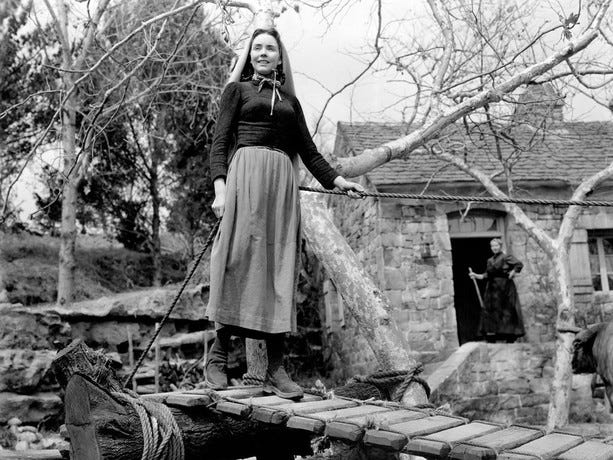
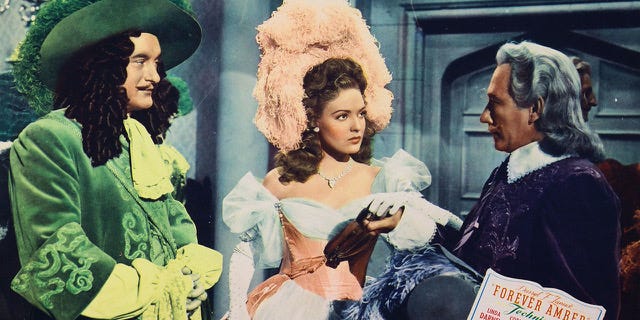



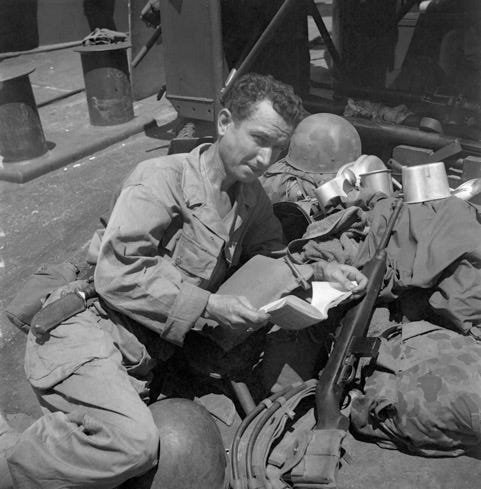
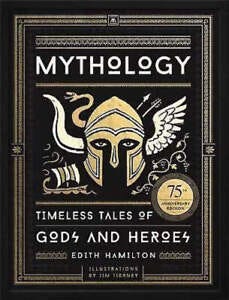


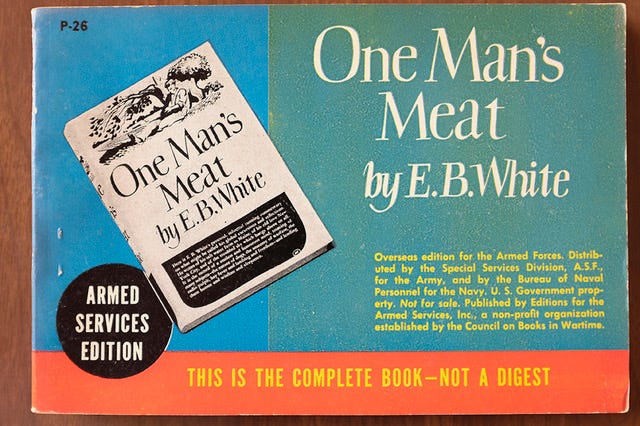
This is great! I read The Robe myself, but had no idea of its popularity during the WWII era. I highly recommend it.
Great books! Will let my grandchildren know@